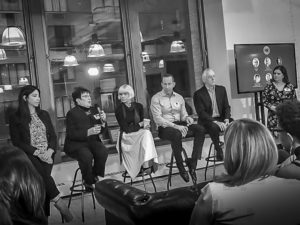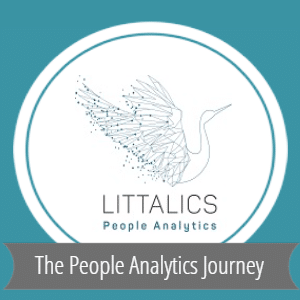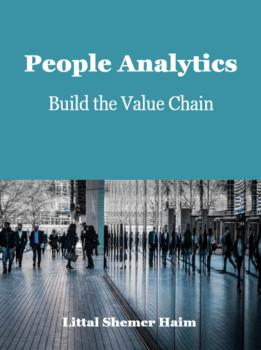What is the right productivity measures: time or outputs? The traditional HR department knows how to accountably measures its activity. The innovative idea behind People Analytics practices is not measurement, but the associations between HR activities and the business KPIs. Productivity is one of the most critical business results, and therefore relevant to projects and products in the domain of People Analytics. However, when I present these basics ideas of People Analytics to HR professionals at all levels, I often hear rejections.
The productivity of knowledge workers
I recall that a global VP of HR once mentioned that since she works in a tech company, she can not possibly hypothesize about the association between HR activities and line of business productivity. I advised her to raise the subject in discussion with R&D leaders in her organization. Like any other business leaders, they must be accountable, and for sure, they measure their productivity. The only question is, How?
However, I do agree with her that measuring the productivity of knowledge workers is more complicated. When we explore employees’ outputs in sales or customer success (for example, in a call center or a field role), outcomes are more straightforward. It’s relatively easy to derive goals and rewards from them. But to measure the productivity of someone who works in a team, in which skills, knowledge, and creativity of the entire team members serve together to reach a goal, is naturally more daunting. And yet, tech organizations do that.
One interesting example was presented this week in an Israeli panel, obviously in a virtual event, by Eldad Maniv, President & COO at Taboola. The panelists discussed “the good, the bad, and the ugly” of measurement in working from home in Covid19 times. But I’ll take only the good from what Maniv shared, as a remarkable example of measuring remote workers. For those of you who are not familiar with Taboola, this company employs about 1400 people in 18 locations worldwide and helps people find relevant content online. They have all worked from home since mid-March. Maniv demonstrated how working from home impacted company measures in R&D, such as Deployed Package and Resolved Tickets.
Time is a common denominator
Clearly, such productivity measures enabled the company to cope with the crisis that severely affected it. And so, we can conclude that R&D organizations know how to measure productivity, and People Analytics leaders can integrate such data into HR data and bring valuable insights. But it also emphasizes the idea that People Analytics practices serve the entire management, particularly Finance. CFOs should use talent data, especially in crisis times, to target the best ways of capturing ROI from people processes and well-being solutions.
Although Maniv emphasized the outcomes in his discussion, it doesn’t mean that the company neglected to measure the facet of time. Indeed, and like many other case studies about working hours in covid19 times, the company experienced increased working hours during the day. For many reasons, people worked longer hours: the need to juggle between work and parenting duties, the lack of leisure activities outside, the pressure to demonstrate engagement and keep the employment status, and more.
Measuring outcomes is crucial, but time is, and always will be, the common denominator that enables us to objectively sum up the productivity of different roles in the organization. People at different levels of the organization should understand what proportion of working hours contributes to the company outcomes. We don’t spend the entire time creating direct contributions. Sometimes we’re socializing, other times learning, and many other human activities are essential to both individuals and the company as a whole but are not associated with outputs. If this time proportion, in general, is sufficient, we should keep it, otherwise improve it. Within it, we can be more productive and produce even more.
I’m a productivity prodigy!
Personally, I strive to boost my productivity both in outputs and time, and I continuously learn new hacks and use new tools for that. But I must also prevent my own burnout, and there is no one other than me to be in charge of my well-being. Working as self-employed makes me a unique case because I’m both the employer and the employee. However, it emphasizes the mutual responsibility of the employers and the employees. Both should discover the relevant means to enhance productivity without the burnout trap. Engaged employees are considered a blessing for any organization. But even employee engagement has its hazards.
What keeps me productive both in terms of outcomes and time? I want to mention two kinds of digital tools that everyone can embrace this way or another. My outputs as a writer and speaker are my content. While writing these words, I use Grammarly. It keeps my writing correct and precise, and also speeds it up. Grammarly counts each word that I write and reports the number of words checked weekly. It compares my result to previous weeks and other users. Over time, I get better (last week, I was a productivity prodigy!), and I can decide whether to adjust my goals and plans or take a rest.
If you read my blog, you know that it’s hard for me to take a rest. But to be productive over time, I control my calendar in reverence. That’s why I insist people in my network, with whom I’m thrilled to interact by Zoom these days, will use my Calendly. My friends, clients, students, and colleagues book me when I’m less productive in creating content. It works for me and many others in SMBs and enterprises. For example, if you haven’t done so before, check the Microsoft case study that proves that you get more productive and happier if you wisely book your meeting. Indeed, in that sense, I sit on giant shoulders.







